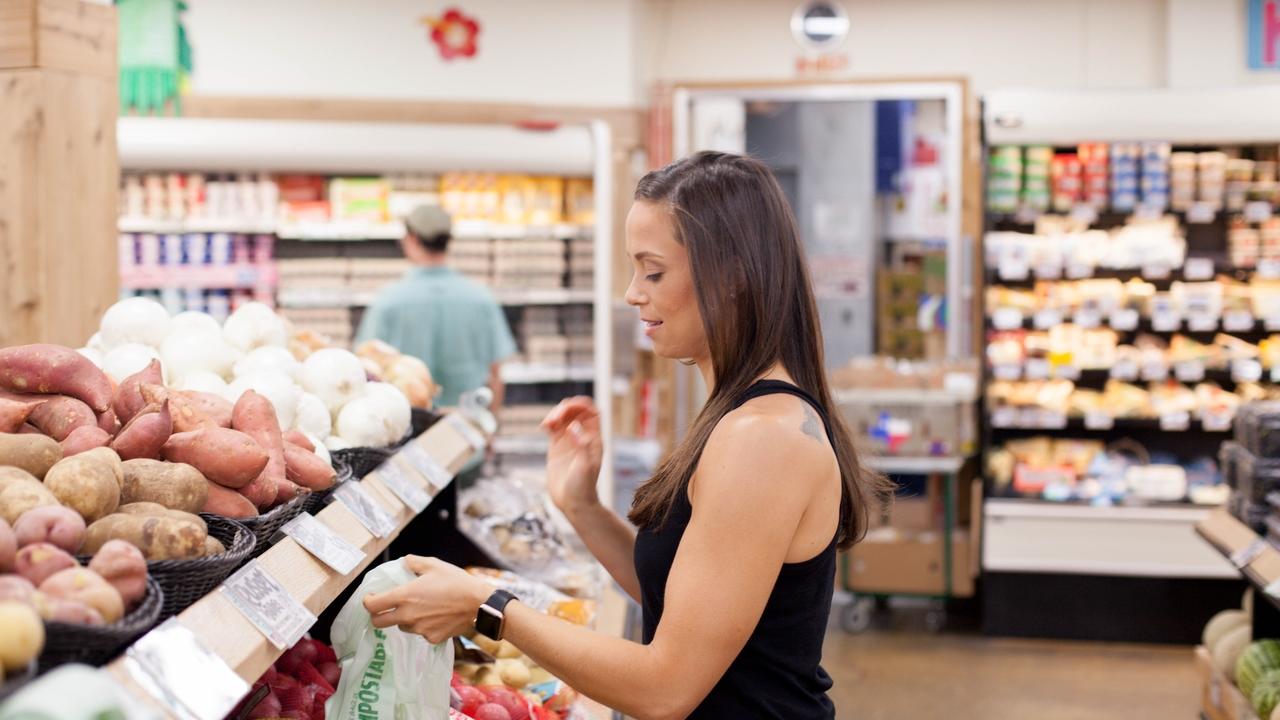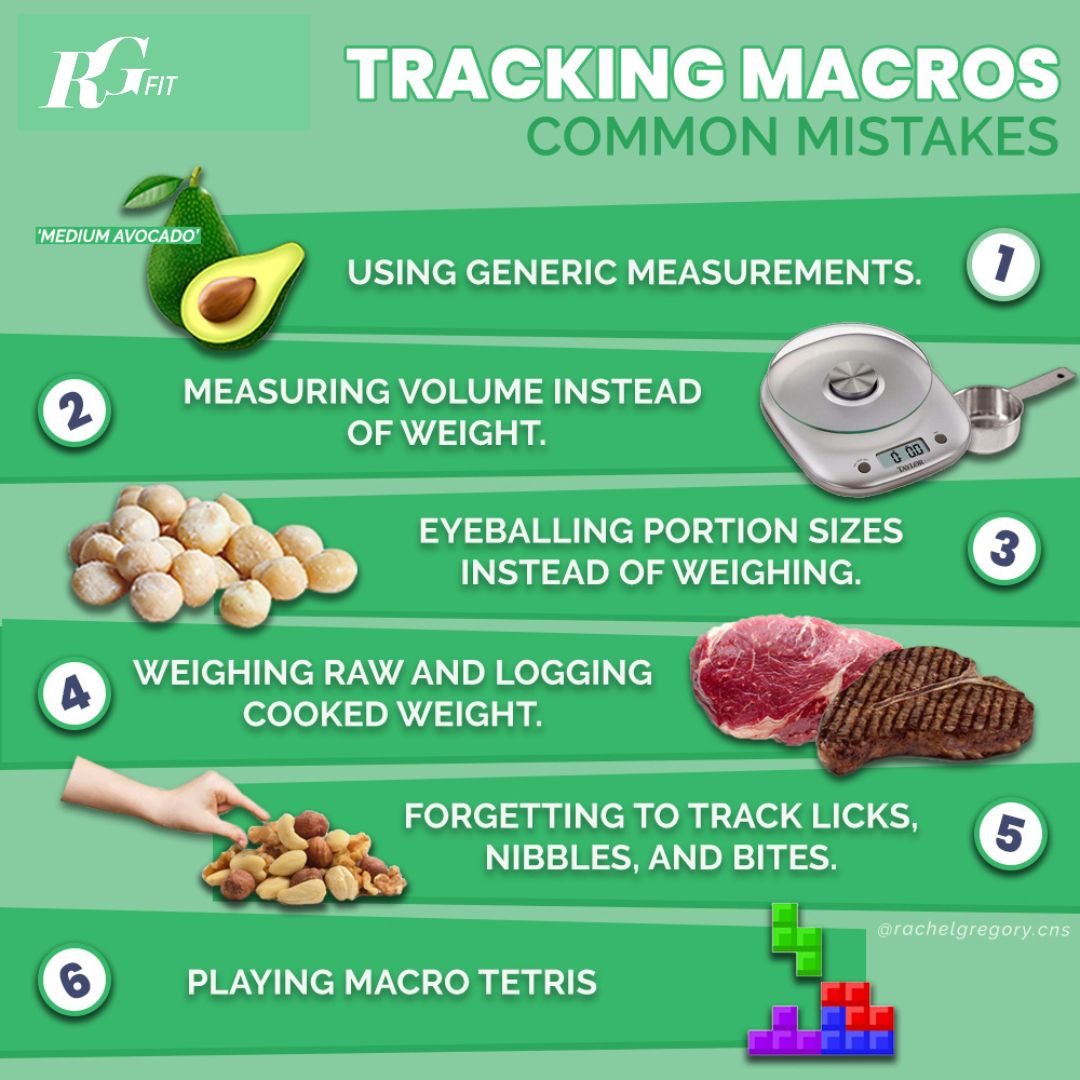
Common Mistakes When Tracking Macros
Sep 27, 2020In the last post, we chatted all about tracking macros and why it can be beneficial in helping you reach your goals.
Quick recap on why tracking your food can be helpful:
- Creates structure, direction, and ultimately more control
- Makes you aware of your eating habits and how those habits affect your results
- Teaches you energy and macronutrient contents of the foods you're eating and the portion sizes
- Helps you gain awareness of mindless eating
- Teaches you how to structure your diet for health and performance
And lots more...
If you missed the last post, you can check it out here: Do I Need To Track Macros To Lose Weight?
Now let's chat about some of the common mistakes that occur when tracking that could be holding you back from reaching your goals 🧐
#1. Using Generic Measurements
The issue with generic measurements is that they are very subjective.
A 'medium avocado' to you could look like a large avocado to me. Same goes for other vegetables, fruits, etc.
Did you know, avocados can range anywhere from 3 to 8.5 ounces (without the seed and skin). If we do the math, that's a range of ~130 to 400 calories!
When tracking, it's best to take the subjective part out as much as possible and base your info on objective data.
Instead of logging 'half a medium avocado,' grab a food scale and measure it out in grams or ounces.
Don't have a food scale? No worries - head over to Amazon and grab THIS food scale. It's the one I personally use, it's super cheap, and has lasted me years!
#2. Measuring Volume Instead Of Weight
I remember when I used to bake with my grandmother as a kid, she always reminded me to be very 'gentle' when scooping the flour into the measuring cup and not packing it down.
Why? Because if you're not careful, you're going to get a lot more than you think you're getting.
Same goes for when you're using measuring cups or spoons to scoop out things like protein powder, almond flour, peanut butter, etc.
Not only could you be packing the contents down more, but it's super easy to overfill or underfill without evening realizing it.
Plus, all measuring spoons and cups are manufactured differently which means they all vary slightly in their capacity.
Again, your best bet is to invest in a food scale. Once you get it, test out what '1 scoop' of your protein powder or '1 tablespoon' of peanut butter actually weighs...I think you'll be very surprised!
Oh and weighing instead of using multiple spoons and cups means less dishes to wash -- it's a win-win situation folks!
#3. Eyeballing Portion Sizes Instead of Weighing
This one pretty much goes hand-in-hand with #2.
Obviously, weighing your food all the time is not practical, especially if you're eating at a restaurant or going over to a friends house for dinner.
BUT, this is where that AWARENESS thing I always talk about comes into play.
Taking the extra 2 seconds to pull out your food scale when you're at home and measuring that handful of almonds or the 6 ounces of steak, is going to teach you exactly what certain quantities of certain foods look like so when you do go out to dinner or over to your friends house for a snack, you'll be able to eyeball your portion sizes MUCH more accurately.
#4. Weighing Raw And Logging Cooked Weight
I get this question all the time:
Should I weigh my food raw or cooked?
The simplest answer is that weighing your food raw will always be more accurate because when we cook food, it can either lose moisture (i.e., meat and veggies) or gain moisture (i.e., rice and oatmeal).
But, at the end of the day, the most important thing to remember is to just be consistent.
So, if you normally log something in raw weight in your tracker, make sure you're actually consuming the raw weight and not the cooked weight.
Quick example..
A good rule of thumb is that meat tends to lose approximately 25% of its weight once cooked.
So, if you grill 6 ounces of chicken breast, it will typically end up weighing around 4.5 ounces after it's cooked. If you're weighing once cooked, then 6 ounces of grilled chicken will actually be about 8 ounces of raw chicken. Make sense?
My recommendation would be, if you can, try to weigh your food raw and log it raw as it tends to be the most accurate.
But, as mentioned earlier, what matters most is that you're staying consistent with your logging method. So if you'd rather log it cooked, just make sure you are searching and selecting the "cooked" option in your tracking app.
I dive into much more detail on this subject and specifically how I recommend doing this for bulk prepping food in my Group Coaching Program if you're interested in learning more.
#5. Forgetting To Track Licks, Nibbles, and Bites
It may not seem like it makes a difference in the moment, but having a few extra macadamia nuts in your afternoon snack or eating a tiny scoop of nut butter late at night...WILL add up.
Remember, calories don't just 'reset' overnight. If you're taking an extra nibble here and a few extra bites there, every day...that will add up over the course of the week and the month.
Be honest with yourself, if you're not logging these 'little' licks, nibbles, and bites throughout the day and struggling to see the results you want...you're only cheating yourself.
It's harsh...but it's reality!
#6. Playing Macros Tetris
ALL of my clients know that I'm a stickler when it comes to pre-planning your meals for the day ahead of time.
The reason is because if you don't go into your day with a plan for the foods/meals you're going to eat, you're just setting yourself up for a more stressful time trying to figure out what to eat and what 'fits' within your daily macro goals.
I say this all the time...
Fail to prepare, prepare to fail.
Again, harsh but true.
If you're constantly playing macro tetris at the end of the day...9 out 10 times you're going to miss your marks. Maybe it works some days, but I promise the burn out will come on real quick.
While you're sitting on the couch watching TV and winding down for the night, take the extra 5-minutes to pre-plan the following day in your tracker.
It doesn't have to be perfect, but just have some sort of plan ready to go. Even just planning 80% of your day ahead of time is going to make a HUGE difference, I promise!

I hope this was helpful!
Remember, macro and calorie tracking is never going to be perfect..
But, it's a great way to increase AWARENESS around your eating habits, portion sizes, and create more objective data to work with as you continue to move closer to your goals.
Ready to join a group of strong, confident, badass women?
Don't miss a beat!
Get my weekly tips, exercises, recipes, and more fun stuff to your inbox every Friday.
Your information is safe.


